In recent years, however, the MT-10 has begun to show its age, especially in terms of technology and rider aids. It was always on the thirsty side, too, and, by modern standards, the brakes were lacking. It was time for an update, which is why for 2022 Yamaha introduced a new MT-10 earlier this year.
Story: Adam Child ‘Chad’
Photography: Peter Callister
The unique-sounding engine was never a weak point but Yamaha did give the MT a little nip-and-tuck. Peak power has increased to 166 hp at 11,500 rpm, which is about six up on the old bike. Torque is up slightly too, from 111 Nm to 112 Nm at the same 9,000 rpm, and Yamaha claim the engine is 15 per cent more efficient than before.
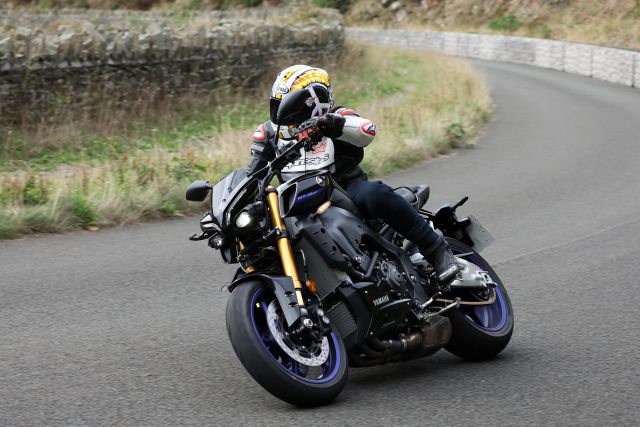
The main frame/chassis remained unchanged, with the big step up focused on the electronic technology. The now “old” Yamaha MT-10 lacked the sophisticated rider aids of the competition but that has been resolved with the implementation of a six-axis IMU, which means all the rider aids are lean-sensitive. Slide control, traction control, cornering ABS, front wheel lift control, and changeable engine brake strategies (as found on the R1) are linked to the IMU. An up-and-down quickshifter comes as standard along with cruise control, a speed limiter, and four riding modes. As you would expect, these can be tailored to match the rider and the conditions and, yes, the anti-wheelie can be deactivated. All this is clearly shown via a new 4.2-inch full-colour dash.
Now the premium SP MT takes that technology to another level with the next-generation Öhlins electronic suspension. It is the first production bike to feature the new Gen-2 system, which provides three semi-active and three manual modes.
Additionally, the SP comes equipped with braided brake lines, which accompany the new Brembo radial master cylinder that was introduced on the standard bike this year. The SP is also distinguishable from the standard bike with a three-piece belly cowl and R1 M-inspired colours.
We took the SP for the ultimate test: a full day at Cadwell Park followed by a trip to the Isle of Man for the Manx GP. Nearly 1,600 kilometres later we have the verdict.
The SP tops the scales two kilograms heavier than the standard MT-10 at 214 kg (wet), but you would never notice the difference, not on the road. The big and obvious difference is the introduction of the Gen-2 Öhlins semi-active suspension, which replaces the KYB fully adjustable units in the standard model. This is the first time the Gen-2 suspension has been seen on a production bike. It is semi-active and automatically makes compression and rebound damping adjustments as you ride. There are three “active” modes to choose from—A-1, A-2, and A-3—and three manual modes: M-1, M-2, and M-3. A-1 is the sporty/track setting, A-2 is more suited to the road, and A-3 is the touring and comfort setting. The “M” settings let you electronically change the suspension and then store your own preference.
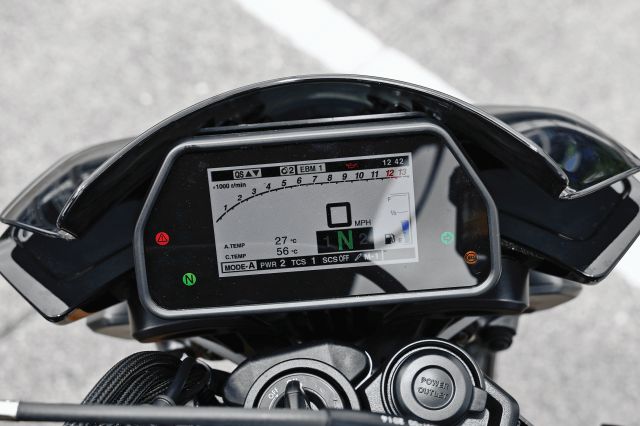
There are many advantages to this system, not least that you can change the suspension settings on the fly. Nor do you have to be a suspension expert to get the best performance from the bike and you do not have to use tools or get your hands dirty to make an adjustment either. Moreover, those three active settings create almost three bikes in one.
On the track, I mainly used the A-1 option, the sportiest of the settings. This was also used for fast blasts on the unrestricted sections on the Isle of Man course. A-2 was my go-to road setting and used on track for one session. A-3 was used on the motorway. It is not overly soft, but the A-3 mode delivers a plush ride, perfect when you just want to crack out the miles. If we had fitted slick or track-day rubber with tyre warmers and really wanted to push for a fast lap, then I may have used one of the manual modes for a specific track setting. The pegs were starting to grind on track and more support would have helped. But on standard rubber, the A-1 mode was sufficient, A-2 also being fine for a spirited ride on track and road. Some semi-active suspension settings remove the feeling of the contact patch, but this is certainly not the case with the new Gen-2 system.
The new Bridgestone S22 rubber is also worthy of mention. It warmed up quicky, inspired confidence and feel on the track and on the road, and was even decent in the wet.

It is fair to say that the MT-10 SP’s weight can be felt during fast direction changes on track and road. It is not as flickable as BMW’s S 1000 R, for example. But equally that extra weight gives stability and larger and taller riders love the mechanical feel of the MT-10 SP.
It really is hard to fault the MT-10 SP as a road and occasional track bike. In less than a week, I managed a track-day at Cadwell Park, toured in relative comfort from Yorkshire to the Isle of Man, commuted around Douglas on the Isle of Man, and had numerous blasts over the Mountain course with the occasional immature wheelie thrown in for good measure, which the MT does with ease. And much of the bike’s versatility is down to the new suspension, which you can adjust on the move by pressing a button—no spanners, expert knowledge or dirty hands required.

Stopping power, a weakness of the old bike, has been improved with a Brembo radial master cylinder. The SP also gets upgraded braided brake lines. The Yamaha four-piston calipers remain the same as in the previous bike but, like the standard MT, cornering ABS comes as standard.
When I first rode the new 2022 MT-10, I was not overly impressed by the brakes, which were all right but a little wooden in feel. However, the SP stoppers were rather impressive, which might be down to the braided lines or, maybe, the pads had been bedded in differently. At Cadwell Park, despite some heavy abuse, there was no indication of fade as stopping power remained strong and the ABS was not too obtrusive.
On the road, the lever has a nice feel around town. The brakes are not overly aggressive and the cornering ABS is a welcome addition over the now old bike. The engine remains the same as in the standard MT-10, which is a positive as the crossplane motor is a peach. Yamaha could have simply thrown in an R1 engine and given us a 200 hp-plus naked bike, but that was not their aim. They wanted to keep the crossplane CP4 engine controllable, with tweaks to the power, torque, and the much-criticised fuel efficiency. They also wanted to improve the character of the distinctive motor, which was arguably already class leading whilst maintaining the bike’s relative affordability.
I have loved the distinctive sound of the crossplane motor ever since the original CP4 was introduced in the R1 in 2009. Now Yamaha have simply amplified that feeling and noise with a new induction system. Those air scoops on top of the fuel-tank are not just for show, they are new acoustic sound grills in the tank designed to direct the intake noise to the rider.
On lap one, short-shifting around Cadwell Park, bringing the road Bridgestone S22 rubber up to temperature, I could hear and almost feel the air being sucked into the induction system; it sounds fantastic. Then, with rubber up to temperature, the howl of the exhaust took over. There is a perfectly timed cut in the ignition on every clutch-less up and down change. It sounded so good, I almost wanted someone else to take the MT-10 SP for a few laps just so I could hear it.
The induction and exhaust note, so distinctive in the MT-10, give the Yamaha a character that no other Japanese manufacturer can match. Short-shifting around Douglas on the Isle of Man or full gas down Park Straight at Cadwell Park were both equally rewarding to the ear drums.
Power has increased slightly on the standard MT-10 as compared to previous years, but you would have to ride the new and old bike one after the other to notice it. The motor is incredibly versatile. Around town, the fuelling is soft and friendly, especially if you soften the power. Then, away from town, you are lavished with low down grunt and a lovely spread of mid-range from 4,000-8,000 rpm. Get on track or on the unrestricted roads in the Isle of Man, where you can really let it sing, and 166 hp is more than enough. Only at Cadwell Park, when chasing race bikes, did I want a little more power, but on the Isle of Man it would show an indicated 240 km/h-plus with relative ease. How much faster do you want to go on a naked road bike?
The MT-10 is essentially a naked R1; therefore, comfort is never going to be excellent. However, I still managed some light touring, including one 210-km motorway stint without stopping.
Yamaha claim the engine is 15 per cent more efficient than before, with a quoted 14.65 km/l). During the test, I averaged 13.21 km/l, including some hard riding on the Isle of Man and a track-day at Cadwell Park. I assume normal riding would deliver closer to Yamaha’s claim. The fuel light would illuminate between 195 and 225 kilometres, depending on the riding, which is not bad. The digital fuel-gauge is a little deceptive and takes forever to come down from fully fuelled before dropping dramatically. Once the fuel light is on, the digital trip reverts to a fuel trip, not fuel remaining.
The SP is comfier than the standard model because, in the A-3 mode, the suspension and ride are noticeably plusher and very comfortable. Like the standard bike, cruise control and a speed limiter come as standard, both useful tools on the motorway, especially with the increasing number of average speed cameras.
The electronic technology is similar to the standard MT-10’s plus the addition of the electronic Gen-2 Öhlins suspension. Yamaha made a huge step in the electronics with the 2022 model.
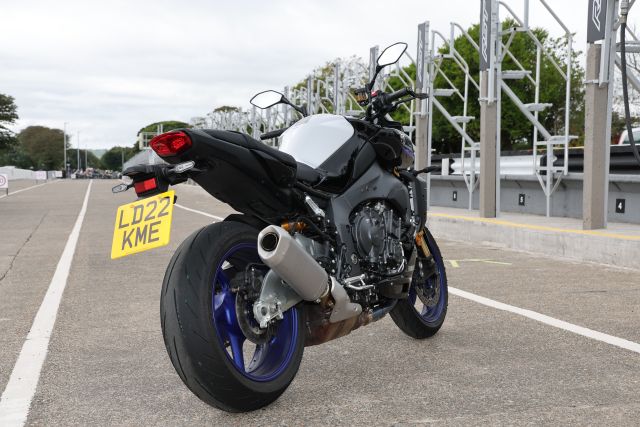
The introduction of a six-axis IMU on the 2022 model has made the electronics lean-sensitive but, do not worry, the big MT is still fun. For example, you can switch off the lift-control but leave the slide and traction control active. This was my preferred option at Cadwell, allowing wheelies over the famous mountain, but still with the safety net the rider aids bring.
There are four riding modes to choose from but, for many, Mode-B is the optimum setting. Even at Cadwell Park on track, I opted for Mode-B. Mode-A is a little too sharp but might be worth a try on a faster track like Silverstone. C and D are more suited to town or slippery conditions, especially for inexperienced riders. During one torrential downpour, I did opt for Mode-D.
The list of rider aids available and adjustments are impressive with even engine brake management and two brake control settings plus an up-and-down quickshifter available—but their operation is far from intuitive. The navigation wheel on the right bar is not ideal and some operations cannot be performed on the fly. After a week on the MT-10 SP, selecting and adjusting the rider aids became second nature, but it took a few days.
I was hugely impressed by the standard MT-10 when I rode it on its world launch earlier this year, especially the much-improved electronic rider aids.
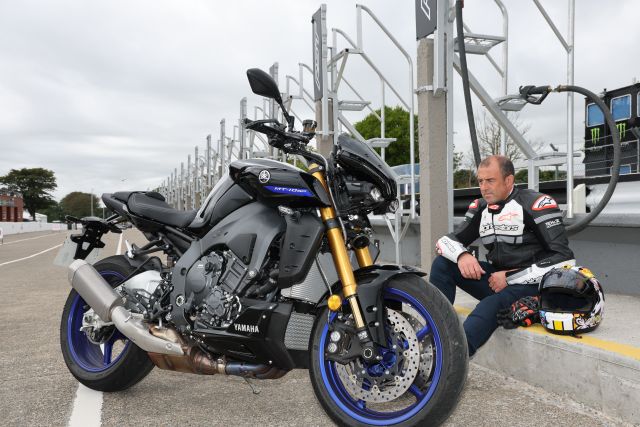
The new SP adds an extra dollop of quality to an already excellent bike and gives the MT-10 even greater versatility. Flicking among the Gen-2 Öhlins suspension modes delivers three bikes in one. It is a composed track bike one minute with great feel and feedback, a road bike the next, then a plush tourer, sort of. All done at the touch of a button. It is an impressive system which adds to an already desirable, all-round, and charismatic road bike. The only problem is it is going to cost you an extra £2,500 (Rs 2.3 lakh). However, despite its £16,000 (Rs 15 lakh) price tag, I am sure the SP will carry on the success story of the MT-10.

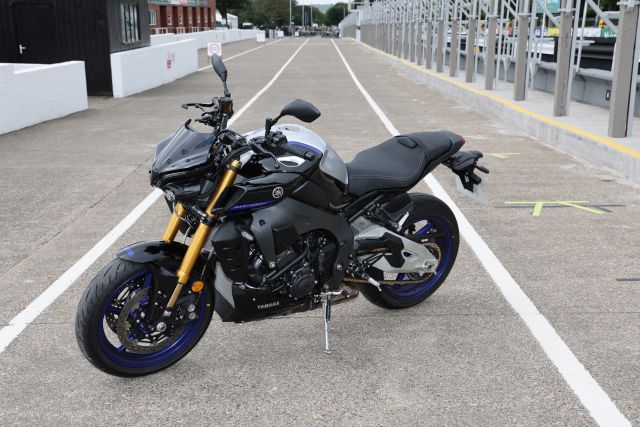

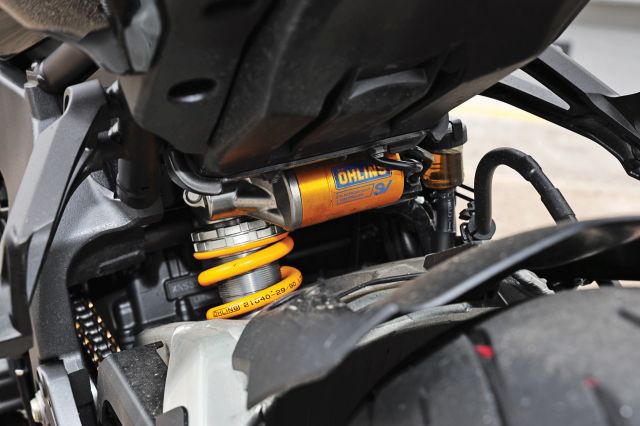
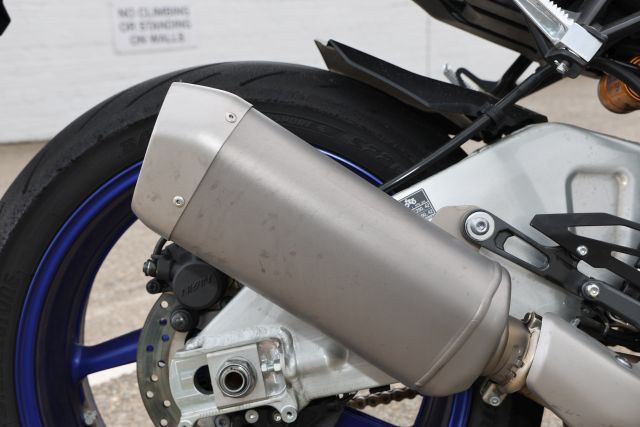

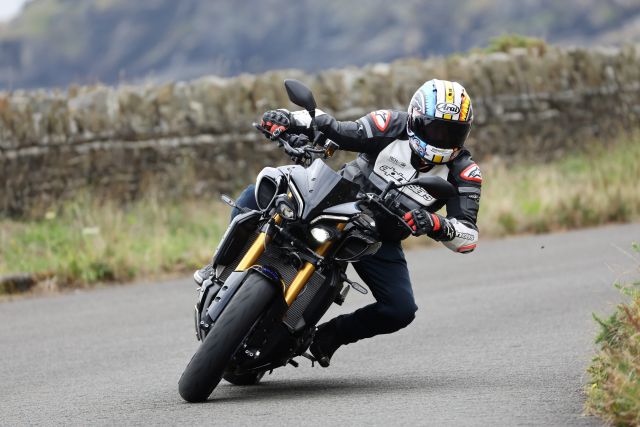

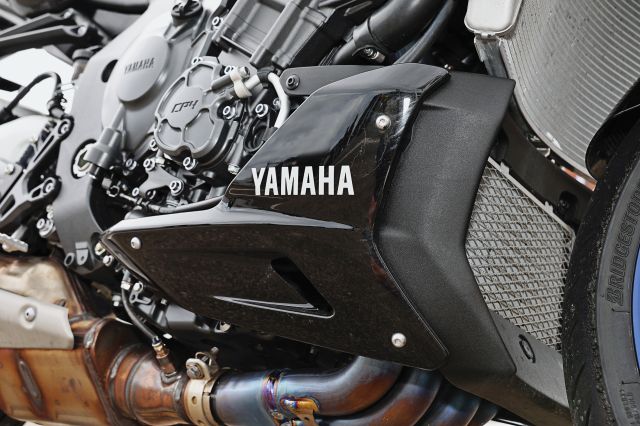
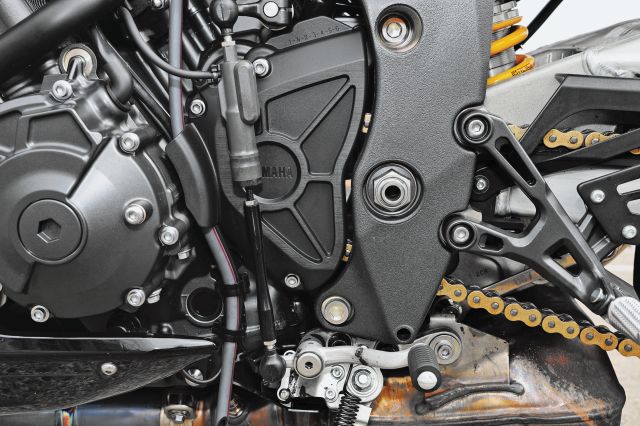

Leave a Reply